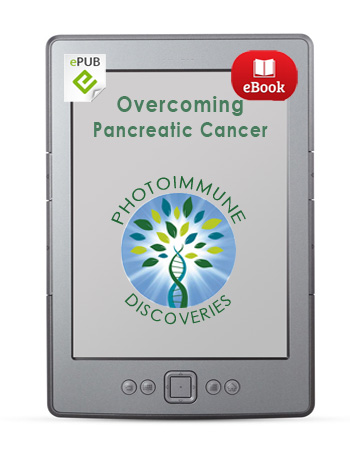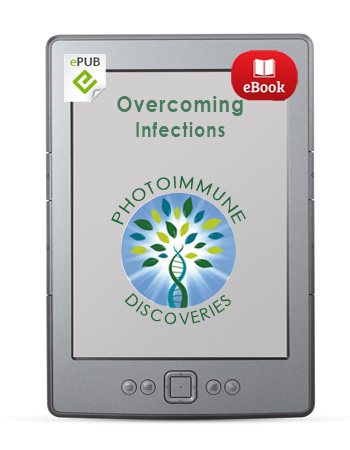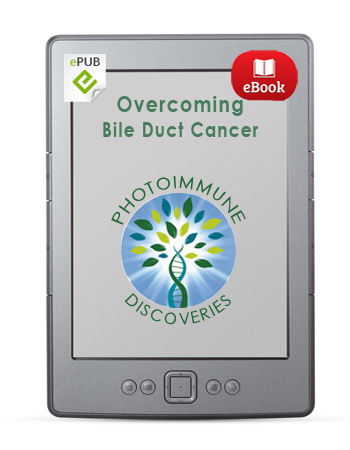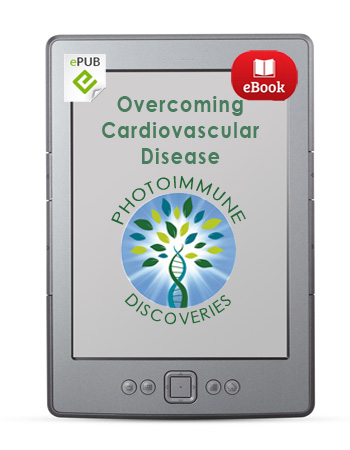Description
Overcoming Pancreatic Cancer
The Promise of Photodynamic Therapy and Other Innovative Therapies
Each year, pancreatic cancer strikes at least 250,000 people around the world. The global incidence of pancreatic cancer has shown a steady increase in recent decades, most of which has occurred in regions of Europe, North America, and Japan. This trend is particularly troublingg since pancreatic cancer is among the deadliest of all cancers. Most cases are diagnosed at a late stage, when the cancer has already spread or metastasized to other organs and is thus not curable with surgery. In addition, this cancer is often highly resistant to standard chemotherapy and radiotherapy.
Overcoming Pancreatic Cancer: The Promise of Photodynamic Therapy and Other Innovative Therapies highlights a new approach to the treatment of pancreatic tumors, one rooted in the astounding cancer-fighting potential of Photomedicine (light-based medicine). Though the therapeutic applications of light date back many centuries, it is only within the past few decades that high-tech developments in laser technology as well as non-laser light have enabled the medical profession to realize the true healing potential of light.
Overcoming Pancreatic Cancer is divided into four parts: (1) Understanding and Treating Pancreatic Cancer; (2) The Photomedical Approach to Pancreatic Cancer; (3) Promising Research Directions; and (4) Long-Term Control: Lifestyle Factors for Preventing Recurrences and Sustaining Remissions. Parts 2 and 3 will likely attract the greatest attention, as these parts present the various applications of Photomedicine while also explaining how such applications can either enhance conventional treatments or compensate for some of the limitations of those treatments.
At least eight out of every 10 cases of pancreatic cancer are considered to be inoperable at the time of diagnosis. Fewer than 5% of all pancreatic cancer cases can be successfully treated with surgery, and even fewer of those cases will go on to live for five years. The case-fatality proportion for all cases approaches 90% within 12 months of the diagnosis. For these reasons, it is clear that innovative treatment strategies are urgently needed.
Part 1 provides an overview of the major risk factors for pancreatic cancer, as well as fundamentals of diagnosing and treating the disease. The current scientific consensus is that a combination of factors contributes to the initiation and development of pancreatic cancer. Well-established risk factors for pancreatic cancer include smoking, obesity, family history of pancreatic cancer, chronic pancreatitis, pancreatic cystic lesions, and diabetes mellitus. A plant-based diet, regular exercise, and avoidance of tobacco smoke can help limit inflammation, thus possibly curbing tumor growth and progression.
The main focus of Part 2 is photodynamic therapy, or PDT. Since very few cases of this cancer actually lend themselves to surgery, it is logical to ask whether PDT can be effective in these situations. As Several studies have shown that PDT can enhance the effectiveness of Gemzar chemotherapy against pancreatic cancer. In animal studies, PDT’s effects against pancreatic tumors were strongest for fast-growing tumors. In addition to the impressive laboratory findings, the initial clinical research suggests that PDT may be able to improve the survival of patients with advanced, inoperable pancreatic cancer.
An excerpt from the book:
“Of course, the real question is whether these laboratory findings will translate into real-life clinical results. The initial evidence suggests that PDT can prolong the survival of patients with advanced, inoperable pancreatic cancer.
“One study of PDT for pancreatic cancer, involving a small group of only 16 patients, was conducted by Dr. Stephen Bown and colleagues at the National Medical Laser Centre in London (England), and the researchers were able to document that pancreatic tumors were indeed destroyed by PDT.
“Over half the group (56%) was alive one year from the time of their diagnosis. Seven of the 16 patients (44%) were alive one year following the PDT treatment, and two were still alive two years after completing PDT. The median survival of 9.5 months compared quite well with other survival statistics for these patients. The main difference is that the PDT-treated patients experienced much lower morbidity, and thus a much better quality of life.
“This was the first published report on PDT for pancreatic cancer. The researchers also noted that the tumor regrew around the edges of the PDT-treated area, and they proposed that future studies should extend the treated area beyond the tumor margins identified on the pretreatment scans. The researchers proposed that PDT may be effective against localized tumors for patients who are poor candidates for surgery, or those for whom the location of the tumor makes surgery inappropriate…
“At this time, a great deal of laboratory research has documented the potential benefits of PDT for pancreatic cancer. Some studies involved different pancreatic cell lines and showed that PDT killed those cells fairly effectively; others involved animals with implanted pancreatic tumors, all of which showed substantial shrinkage or destruction of the tumor. The possibility that PDT could destroy pancreatic tumors while also eliminating micrometastases (via an effect on the anti-cancer immune mechanisms) seems very compelling and worth exploring in future clinical trials.
“In conclusion, at least one pilot clinical study has suggested that PDT could be effective in locally advanced pancreatic cancer cases. PDT represents a novel treatment possibility for the approximately 80% of pancreatic cancer cases that are not amenable to surgery. PDT produces localized tumor destruction (necrosis) with light—most conveniently from a low-power red laser light—after prior administration of a photosensitizer.
“Also, given its potential synergy with Gemzar, PDT could be considered as part of a total treatment approach that includes Gemzar chemotherapy. Whenever a disease like pancreatic cancer has proven very difficult to treat, one should remain open to options that are relatively safe and fairly easy to incorporate into the treatment regimen. This is certainly the case with PDT and Gemzar, but it will be up to your oncologist to consider trying this combination.”
Part 3 explores future research directions for combining PDT with immunotherapy, hyperbaric oxygen therapy, hyperthermia and other innovative therapies, while Part 4 lays out the long-term control strategies that may help keep pancreatic cancer from developing and progressing into a life-threatening disease.
Lastly, photodynamic diagnosis (photodiagnosis) may play a central role in the future detection and control of pancreatic cancer. By detecting small pancreatic tumors, photodiagnosis provides vital information for anyone hoping to avoid the eventual development of a more aggressive cancer. This information can be used to help alert you, the patient, to the need to be more aggressively proactive in your efforts to ward off cancer, perhaps using a combination of nutritional, herbal, and innovative medical strategies.
The ebook’s appendix includes a special discussion about two light-sensitizing substances, a dietary supplement called Bremachlorophyll, and a unique medicine called Bremachlorin. Because of its diverse effects against cancer, Bremachlorin-PDT is likely to revolutionize the way Photomedicine is incorporated into modern cancer treatment.






 English
English Français
Français Deutsch
Deutsch Nederlands
Nederlands